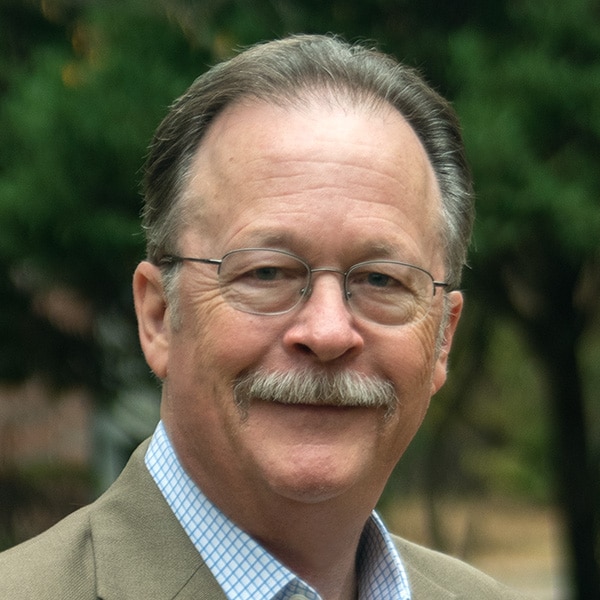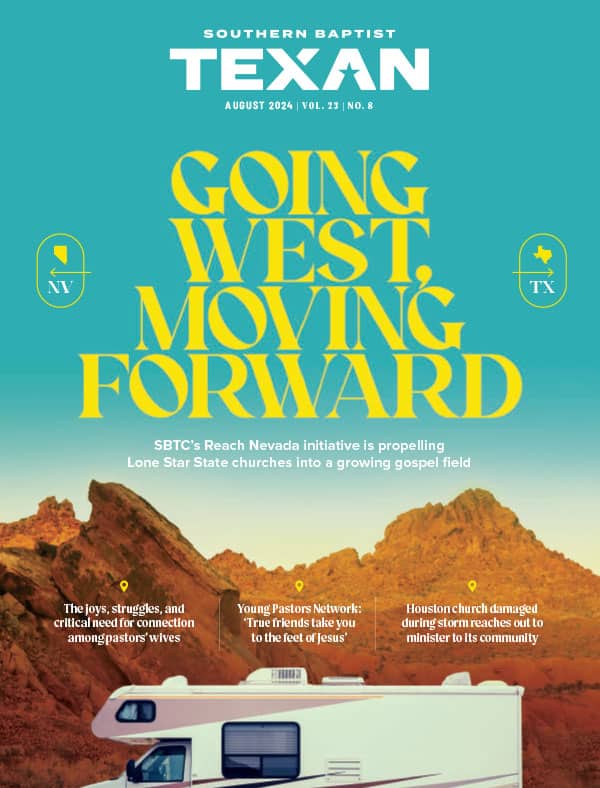I went back to the Grand Canyon this summer, but this time as a student rather than a tourist. Thanks to the folks at Canyon Ministries and Answers in Genesis I was the token editor in an international group of professors, apologists, theologians and pastors who took an advanced seminar on the geology of the canyon. For a week we rode a raft, hiked into side canyons and camped 5,000 feet below the rim of this incredible demonstration of God’s power.
Most of our group went into the trip convinced that the earth is less than 100,000 years old but a few were old earthers, open to the current majority view that the earth is millions or billions of years old and that the processes that formed its current state are gradual ones. Not surprisingly, no one in our group changed his mind though some of us understood our own convictions better by the end of our 190-mile journey.
The Grand Canyon is ground zero in the debate between creationists and the scientific status quo. Here you can see, especially from the bottom, geological strata from top to bottom without digging. We saw volcanic rock, sandstone, shale, limestone and sediment that has more recently formed along streams that seep down the canyon walls. We saw powerful evidence of very recent erosion, less than five years old, in which enormous boulders were carried nearly a mile on a stream of mud and gravel during a weekend flood. In some places we could see tracks in solid rock and even curved walls of stone that looked like soft mud frozen in time. The geologists teaching our group were enraptured every hour of each long day.
Much of our time was spent discussing the Genesis flood as a possible cause of this great natural wonder. The majority opinion among scientists is that the canyon was eroded by the Colorado River over many millions of years, the high walls also being raised and lowered by earthquakes and local catastrophes. This view is difficult to reconcile with the biblical record. Moses, Paul and Jesus at least apparently believed that Noah was a historical figure and that the great flood occurred as recorded in Genesis. We who believe that God has spoken in Scripture with no intent to deceive find it hard to escape the claim that the earth was covered with water 20 feet over the mountains in a worldwide catastrophe in which all air-breathing things outside the ark died. In the conventional geological timeline of the earth this happened pretty recently, within the past 10,000 years, if the Bible is true. If such a thing occurred, it changed the face of the whole earth. Bible-believing Christians are led to see signs of the fairly recent event in most mountains, canyons and fossil beds.
Our assumptions are transparent. We believe that God was the eyewitness to these events and that he revealed some details to Moses in the inspiration of Genesis. Proving something that happened thousands of years ago is not possible; neither is proving something purported to have happened between 250 million and 4 billion years ago. All those who present theories on the subject begin with opinions about what is possible and plausible that fence in their interpretation of the data. Some deny it but every person has a worldview built on some unprovable bedrock. That worldview starts with our response to God (Romans 1:21) and forms outwardly from there.
Genesis geology suggests a younger earth because the significant events of earth’s history happened around or after the special creation of a man and woman who were the parents of all. The genealogy recorded in Scripture may not be complete but it does not leave room for a span of even 100,000 years between Genesis 2 and today. If sin and death began after Adam and Eve and if something as significant as the destruction of nearly all mankind happened a few generations after Adam you begin to see how a much shorter timeline is suggested for the age of the earth but more significantly for the age of mankind.
Considering the flood as a possible cause of the trauma visible in the Grand Canyon allows us to work backward in understanding creation. If the Bible says the flood happened and if it is reasonable to believe that such an event left a mark on the land, then much of what the majority of scientists say about the formation of rocks and the erosion of canyons is up for discussion—a discussion they do not want to have for the most part. If the geological record does not require millions of years (because the canyon was formed by the fairly recent flood) then there is not sufficient time for the evolving of man from lower forms of life. If man did not ascend from lower forms of life then the Bible’s telling of the creation story is as plausible as any narrative imaginable. If the Bible is true, that truth does not upset thousands of years of scientific inquiry. The truth of the Bible actually challenges philosophy that gained momentum within the past 400 years. In our culture, this worldview became the majority view of intellectuals during the last 150 to 200 years. The scientific theories grew out of the philosophy, the worldview, not the other way around.
Back to the canyon. On this, my third visit to the Grand Canyon, my thinking moved beyond the romantic contemplation of beauty and power revealed in the scenery. As I began to see the words of Scripture written on the features of the land I began to see that so much of dramatic beauty is also the record of God’s judgment, a warning. Seeing the record of violent volcanic activity at the bottom and the top of the canyon reminded me that the bursting of the fountains of the deep was an incredibly violent event. The gathering of water in huge lakes that drained for perhaps 1,000 years in periodic torrents that scrubbed the land and ripped through every fault and fissure suggests a catastrophe with aftershocks that were locally as destructive as the worldwide flood. There was a warning there—an offense to God’s holiness is not a small thing. The God who could speak all this into existence can wash it clean in big and small ways according to his will. No weapon of men can aspire to the power that so thoroughly changed the face of the planet. From the bottom we could see the power of God at its most terrible.
But there is also hope in the midst of the record of judgment. When we’d round a bend and see a tableau of green and red and orange, stark white against black volcanic flow, we snapped photos like maniacs. The attraction was majesty. We’d lay at night in one of the few places where stars are visible in the U.S. and watch the Milky Way and various constellations rise and set between the canyon walls. It was so dark we’d track satellites in their relatively rapid course across our viewpoint. The mornings were cool and we’d sometimes see fog on the river, softening the light against the massive cliff faces. Our human nature was designed to respond emotionally to the sights and sensations of even this harsh and scarred land.
The God who judged the earth in the flood sent a double rainbow over the river the night we arrived at the Colorado. It was a promise that he is the God who also redeems the sinners and who will recreate the world as perfect as it ever was. We did not sing, pray and read Scripture between the canyon walls because we were cowed by the record of judgment but because we knew the story of hope and the promise of renewal implied even in the record of death and destruction. For those who do not believe, the canyon is a laboratory of random events that occurred quietly over thousands of millennia and will sputter out to no purpose at some point millions of years hence. Our happy band saw signs of a more perfect creation which was, which is fallen and which is to come. Yes, our creator speaks through what is created but he is the focus of that revelation and not the medium of rocks, fossils and stars. He is the one who warns us that he is a holy and just God, but also that he is the source of pure pleasure and hope for those who will understand his works.
Assistance appreciated from answersingenesis.org and canyonministries.com














